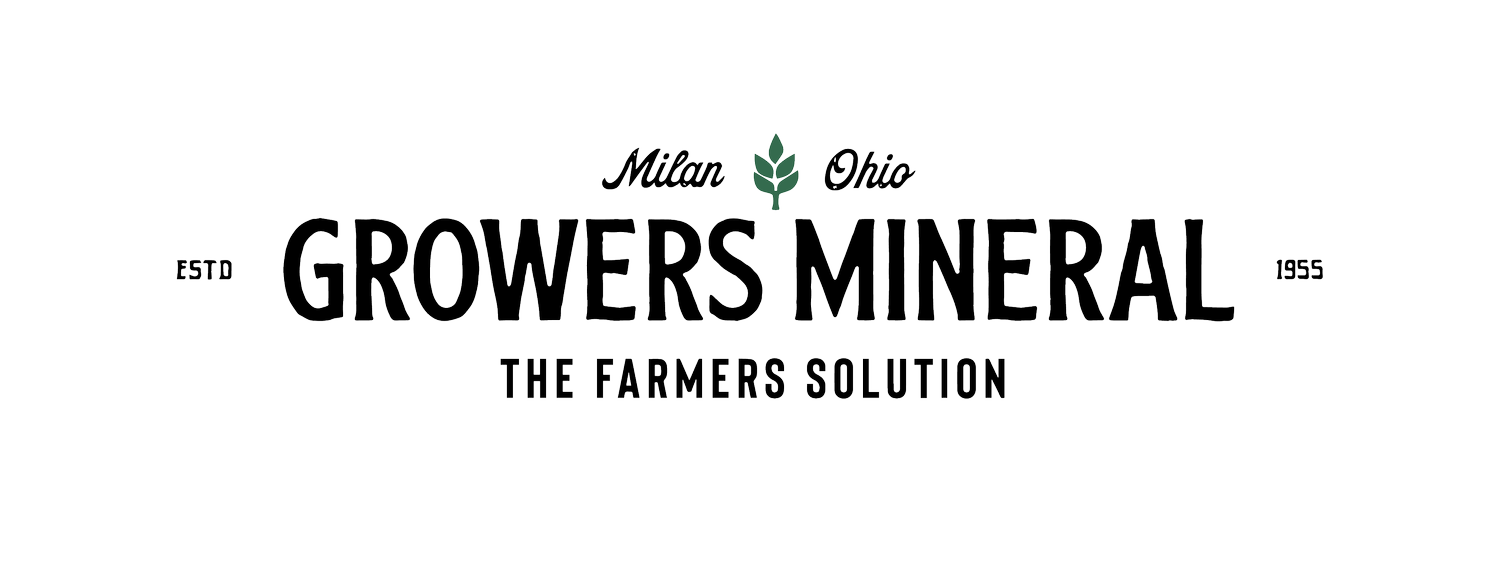Introduction to GMS
Marty Whitsitt, who is a Growers Mineral, Corp. District Manager located in southwestern Indiana, was asked to write a brief summary of Growers Mineral Solution and the Growers program for an agricultural publication. The following is that summary.
Growers Mineral Solutions (GMS) has been in business since 1955 and is still the same product following the same simple guidelines laid out by Dr. V.A. Tiedjens all those years ago. Those guidelines are to use a high quality liquid fertilizer for the plants that stimulates the biological life instead of injuring it, and provide the best growing environment in the soil by adding high calcium limestone.
Calcium in the soil is a cornerstone of the Growers program. Contrary to "mainstream" agriculture, pH is not a direct indicator of calcium. All minerals have a pH of their own, and the number that pops out on a soil test is just the average of all those pH's blended together. We all know that adding limestone can raise the pH of acidic soil, but did you know it can also lower the pH if it is high? The pH of calcium is about 7, so it will always push the soil pH toward 7. When we consider that magnesium is just over 8 pH and potassium is almost 9 pH, and soil is pulverized into powder and baked dry, killing all biological life, before testing, the soil test begins to look quite meaningless.
Calcium is a natural flocculant that pulls clay molecules into balls providing needed soil pore space for air and water to move as it should, creating the ideal environment for the all important biological life. If soil is sticky and slimy when wet and bakes hard as a rock when dry, change it with limestone. If soil doesn't want to drain, with or without tile, change it with limestone. How much lime do you need? Only your farm can answer that question by putting in test strips of high calcium lime ranging from 5 to 20 tons per acre, and watch what happens. Some of our customers call limestone "white gold." It is viewed as part of the fertilizer program and not just a pH adjuster.
Talking about calcium is the first thing that sets us apart from other fertilizer programs. Second is GMS itself, a unique product that is a 10-20-10 analysis with trace minerals included in a hot mixed true solution. This means the trace minerals will not settle out over time. Much effort is put into making sure GMS has a significantly lower level of toxic heavy metals such as cadmium and uranium. Since the toxicity is much lower, when GMS is placed near the seed it is consumed by the biological life and held in their tissue in the soil as they multiply rapidly and then present the minerals to the plant as needed without being leached away by rain. When applied as foliar spray to the growing leaf, GMS is quickly absorbed, spreading throughout the plant, even the roots, helping again to feed the biological life near the root. GMS is about 95% utilized by the crop where most dry fertilizer is only about 10% utilized. A little goes a long way!
With a low level of toxicity, GMS is the only fertilizer that is FDA approved to be used as livestock mineral. Dry livestock minerals are just ground up rock and a very small portion is absorbed and utilized by the animal. The rest goes out in the manure pit. GMS is easily absorbed by the animal and can reduce phosphorous levels in the manure pit while maintaining phosphorous levels in the animal. The trace minerals also feed the biologicals in the animals to aid digestion and feed utilization. With adequate calcium and GMS on forages, we are able to produce nutrient dense feed that tends to reduce health issues. Lower vet bills and less volume of feed for the same production, whether it is meat or milk, helps to improve the bottom line.
Our job is to teach you what you need to know so you can make your own decisions as to what your land and animals need. No paid "expert" can look at a piece of paper (soil test) and know your farm better than you or read a report (forage analysis) and tell your animals what is best for them.
This introduction letter has just scratched the surface of the vast information gathered from our network of farmers over our 68 years of experience. Let us teach you what we have learned!
This is an excerpt from the Summer Growers Solution (2023) written by Marty Whitsitt, Growers District Manager.
Signup for our newsletter to stay in the loop
